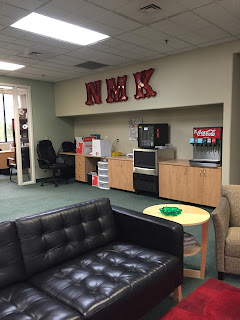Hi all!! Wow. What, a, week.
I began my week visiting the University of Southern
California, which was a very very fun experience. I really enjoyed getting to
know the campus better, and it’s incredible to start see the intense college
process become something real (no matter the college). I spent Monday and
Tuesday in the warm and beautiful eighty degree weather of Los Angeles, and,
with a big weekend currently happening (which I will explain later), that left
me with only two days to work. Do the math and that leads to two 8 hour work
days. Woo!!!
I started Wednesday bright and early (and I mean early
because I was on the road at seven) off on my way to Chandler. Once I made it
out there I had the pleasure of attending two presentations, both on substance
abuse. I know a lot of you asked about what is included in the presentations,
so now I can give you more information! They often include personal stories
from the presenters if it is applicable. The presentations very based on topic
but always include coping mechanisms and resources. These coping mechanisms
include sports, ways to stay healthy, hobbies, people to surround yourself
with, and mental health tips. The resources always include other people to
reach out to. Who? Teen life line, the texting line of teen life line, Not My
Kid, and a few others.
I really enjoyed attending my first presentations. The presenter
was very inspiring and did an incredible job engaging both of the groups.
Afterwords I drove to a much less affluent part of Phoenix for a presentation
on bullying. This presentation also included a personal story, and, even in
just the initial observations, it was immediately clear that the presentation
had a much different affect on this group.
On Thursday, I again started my morning with a presentation in a very affluent part of
Phoenix. The presentation was pretty much a bust, which, in the grand scheme of
my research, is very interesting and actually gives a great amount of data. For
one, it was interesting to see how the teachers were very unsupportive at this
school. Secondly, this was a huge group, about 4 times the size of the other
presentations. And third, this school was very nice. I’m very eager at analyze
the results.
The most interesting presentation though was certainly the
Thursday night one, a presentation on suicide, depression, and self-harm. This
school was in the same district as Independence high school, which, if you
remember, recently had a very real and tragic encounter with suicide. This
particular presentation unlike the others was a
parent presentation. They were very very invested and had very emotional
reactions. The questions they asked truly opened my eyes and this whole
experience really has already started to do so.
I’m looking forward to seeing where all of the data leads.
Until next time!!






